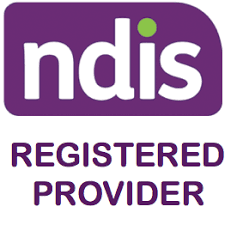Apps
Definition of Vision Impairment
Vision plays an important role in our growth, development, and daily performance. Vision impairment is a term used to describe when an individual’s vision disorder affects the ability to function.
Some visual impairments can be corrected with eyeglasses. The two most common difficulties are myopia (nearsightedness) and hyperopia (farsightedness). The eye is still capable of serving as a major channel for information processing. However, individuals with severe visual impairments have difficulty seeing, even with glasses or contact lenses.
The visual loss is so severe that their eyes can no longer serve as a major channel for information processing.
Causes of Vision Impairment
Visual impairment may arise from conditions such as:
- Genetic conditions (e.g. Usher's syndrome, Gillespie syndrome and Retinitis Pigmentosa)
- Neurological visual impairment caused by a disorder or injury that affects parts of the brain that control vision (e.g. Cortical visual impairment (CVI), delayed visual maturation, and cortical blindness)
- Illnesses that happen to some premature babies (e.g. Retinopathy of prematurity) or babies that have particular problems during their birth (e.g. paediatric glaucoma)
- Age-related deterioration (e.g. macular degeneration)
- Traumatic injury to the eye
Types of Vision Impairment
There are many different types of visual impairment, which results in a wide range of visual capacities, depending on the degree of their functional vision, visual efficiency, age of onset, effects of additional disabilities and the demands of their environment.
Symptoms of Vision Impairment
Possible signs of visual impairment include:
- Rubbing eyes during or after short periods of visual activity
- Bumping or tripping into things regularly
- Difficulty moving around unfamiliar places
- Difficulty coping and seeing in low light or bright light
- Holding book too closely; placing face too close to surface, or sitting up close to technology
- Problems seeing in low light or bright light
- Difficulty identifying faces, facial expressions or making eye contact
- Trouble with identifying colours
- Relying primarily on touch to find and identify items
Behaviour Help
If you are supporting an individual with this diagnosis, please refer to our services and resources. They aim to help children, adolescents and adults achieve better communication, social, emotional, behavioural and learning outcomes. So whether you are wanting guidance on parenting, teaching, supporting or providing therapy, Behaviour Help is at hand.
Note: This is not an exhaustive list of all the possible causes, symptoms and types but some general information that can be further explored. Based on what you have read if you have any concerns about an individual, please raise them with the individual/s. The caregiver can then raise these concerns with their local doctor who can provide a referral to the relevant professional (e.g. paediatrician, psychologist, psychiatrist, allied health professional and learning specialists) for diagnosis and treatment if appropriate.
Get Started with Behaviour Help App
Assess-manage-prevent behaviours of concern efficiently and effectively with the Behaviour Help App.

